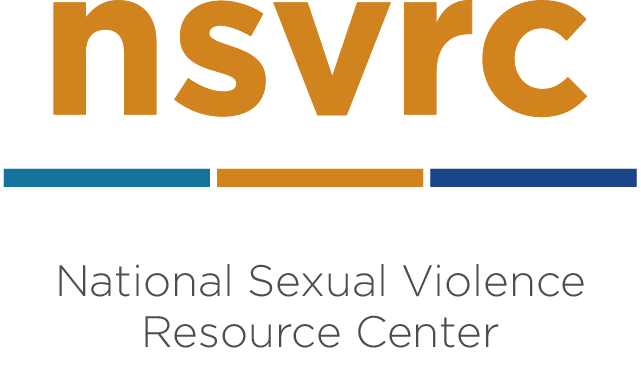- FIND RESOURCES
- Survivors
- Friends & Family
- Advocates & Educators
- Media & Press
- OUR WORK
- SEXUAL ASSAULT AWARENESS MONTH
Sexual violence happens in every community and affects people of all genders and ages. Sexual violence is any type of unwanted sexual contact. This includes words and actions of a sexual nature against a person’s will and without their consent. A person may use force, threats, manipulation, or coercion to commit sexual violence.
Forms of sexual violence include:
There is a social context that surrounds sexual violence. Social norms that condone violence, use power over others, traditional constructs of masculinity, the subjugation of women, and silence about violence and abuse contribute to the occurrence of sexual violence. Oppression in all of its forms is among the root causes of sexual violence. Sexual violence is preventable through collaborations of community members at multiple levels of society—in our homes, neighborhoods, schools, faith settings, workplaces, and other settings. We all play a role in preventing sexual violence and establishing norms of respect, safety, equality, and helping others.
Consent must be freely given and informed, and a person can change their mind at any time.
Consent is more than a yes or no. It is a dialogue about desires, needs, and level of comfort with different sexual interactions.
Victims of sexual violence include people of all ages, races, genders, and religions — with and without disabilities.
People who sexually abuse usually target someone they know.
Choosing to violate another person is not about “drinking too much,” “trying to have a good time,” or ”getting carried away,” nor is it about the clothes someone was wearing, how they were acting, or what type of relationship they have with the person who abused them. Violating another person is a choice.
A person may choose not to report to law enforcement or tell anyone about a victimization they experienced for many reasons. Some of the most common include:
The impact of sexual violence extends beyond the individual survivor and reaches all of society.
An assault may impact a survivor’s daily life no matter when it happened. Each survivor reacts to sexual violence in their own way. Common emotional reactions include guilt, shame, fear, numbness, shock, and feelings of isolation.
Physical impacts may include personal injuries, concerns about pregnancy, or risk of contracting a sexually transmitted infection. Economic impacts of sexual violence include medical and other expenses in addition to things like time off work. The long-term psychological effects survivors may face if their trauma is left untreated include post-traumatic stress disorder, anxiety, depression, isolation, and others.
Sexual violence can affect parents, friends, partners, children, spouses, and/or coworkers of the survivor. As they try to make sense of what happened, loved ones may experience similar reactions and feelings to those of the survivor such as fear, guilt, self-blame, and anger.
Schools, workplaces, neighborhoods, campuses, and cultural or religious communities may feel fear, anger, or disbelief when sexual assault happens in their community. Violence of all kinds destroys a sense of safety and trust. There are financial costs to communities including medical services, criminal justice expenses, crisis and mental health service fees, and the lost contributions of individuals affected by sexual violence.
The contributions and achievements that may never come as a result of sexual violence represent a cost to society that cannot be measured. Sexual violence weakens the basic pillars of safety and trust that people long to feel in their communities because it creates an environment of fear and oppression.
A recent study from the Centers for Disease Control and Prevention found that individual victims of sexual violence incur $122,461 over a lifetime in costs associated with lost wages, health, criminal justice, and property damage (Peterson et al., 2017). Additional research shows that sexual violence can derail a person’s education and employment, resulting in a $241,600 income loss over a lifetime (MacMillan, 2000).
Sexual assault and the related trauma response can disrupt survivors’ employment in several ways, including time off, diminished performance, job loss, and inability to work (Loya, 2014).
In 2015, the Equal Employment Opportunity Commission alone recovered $164.5 million for workers alleging harassment (Equal Employment Opportunity Commission, 2016). Indirect costs for employers include decreased productivity, higher turnover, and reputation damage.
Black, M. C., Basile, K. C., Breiding, M. J., Smith, S. G., Walters, M. L., Merrick, M. T., Chen, J., & Stevens, M. R. (2011). National Intimate Partner and Sexual Violence Survey: 2010 summary report. Retrieved from the National Center for Injury Prevention and Control, Centers for Disease Control and Prevention: http://www.cdc.gov/violenceprevention/pdf/nisvs_report2010-a.pdf
Equal Employment Opportunity Commission. (2016). Final Report of the EEOC Select Task Force on the Study of Harassment in the Workplace. Washington. D. C. Retrieved from: https://www.eeoc.gov/eeoc/task_force/harassment/index.cfm
Kilpatrick, D. G., Saunders, B. E., & Smith, D. W. (2003). Youth victimization: Prevalence and implications (NIJ Research Brief NCJ 194972). Retrieved from the National Criminal Justice Reference Service: https://www.ncjrs.gov/pdffiles1/nij/194972.pdf
Loya, R. M. (2014) Rape as an economic crime: The impact of sexual violence on survivor’s employment and economic well-being. Journal of Interpersonal Violence, 30 (16), 2793-2813. doi:10.1177/0886260514554291
MacMillan, R. (2000). Adolescent victimization and income deficits in adulthood: Rethinking the costs of criminal violence from a life-course perspective. Criminology, 38(2), doi: 10.1111/j.1745-9125.2000.tb00899.x
Peterson, C., DeGue, S., Florence, C., & Lokey, C. N. (2017). Lifetime economic burden of rape among U.S. adults. American Journal of Preventive Medicine. doi:10.1016/j. amepre.2016.11.014
